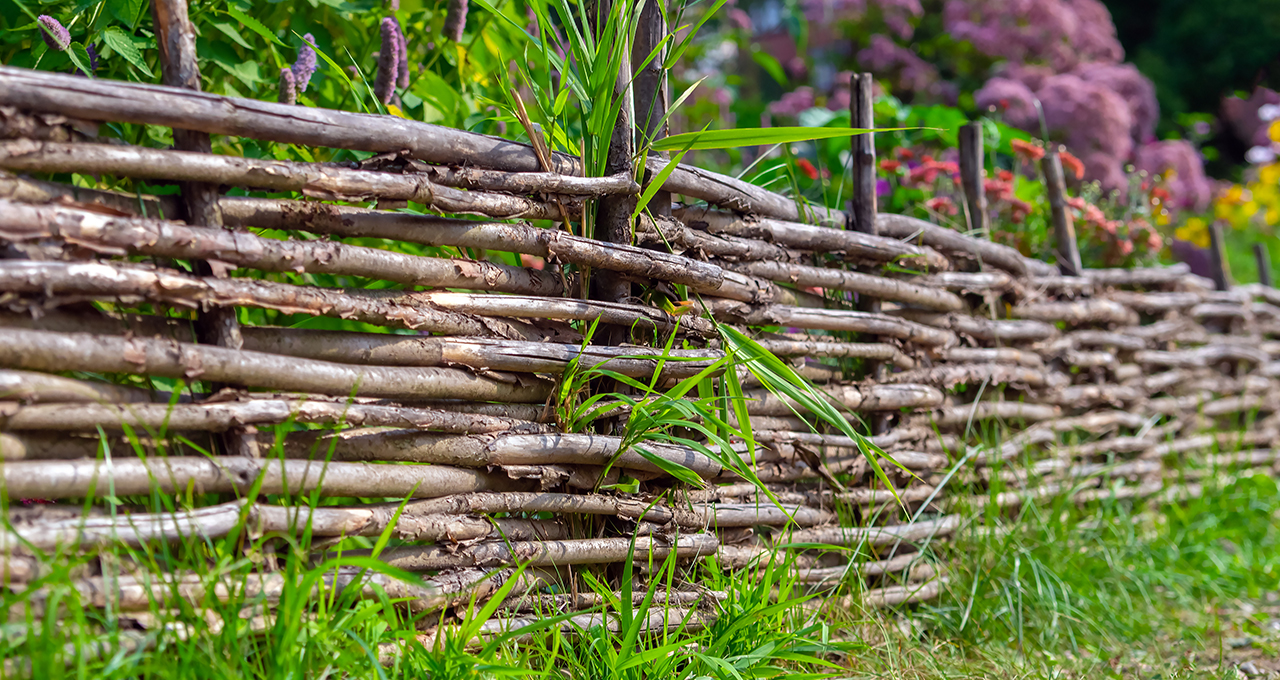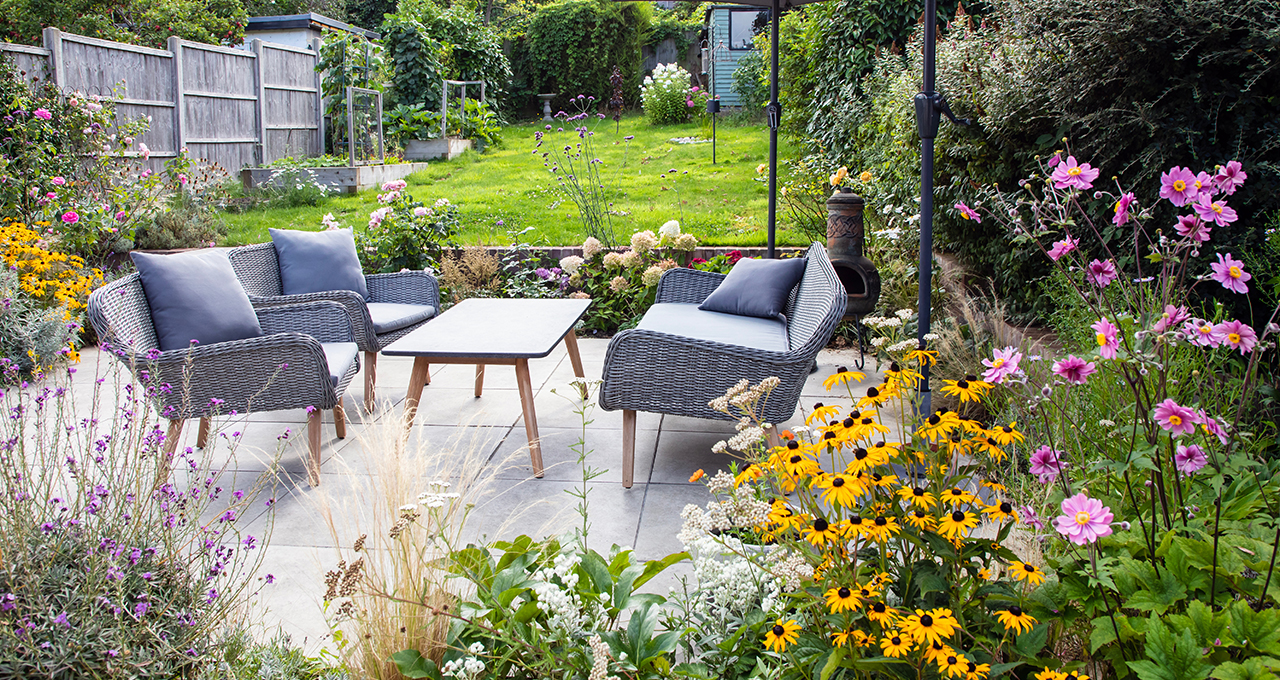Bridging the garden divide: 10 ideas for dividing a garden
When it comes to our gardens, we usually fall into one of two camps: those who find delight in a touch of chaos, and others who lean towards cohesive arrangements and structured layouts. And this is also true when drawing up your garden divide plans – you can go organised or more fluid. If you intend to exploit your plot, not only for aesthetic reasons, but as a practical space for dining and culinary pursuits, a little order goes a long way.
Here are 10 ideas for dividing up a garden, whatever its size. But first, listen up while we explain the benefits of introducing structure through division and zoning, including how this will magnify the final result in terms of looks and ergonomics.









Why zone your garden? The benefits of implementing a garden divide concept
So why zone your garden at all? Well, the short answer: it looks so much better. And the slightly longer answer: dividing up a garden offers numerous advantages, including improved functionality, aesthetics, maintenance, and the ability to cater to specific needs and preferences within the space. It’s not all about functionality though; while you enhance the utility of the garden, your creative expression can run free. Why stick to a simplistic design, when you can blur and bend your perception of the space? With garden partitions in place, we can hide parts of the garden and create the illusion of added depth, length and build up a sense of mystery. What’s around the corner?...3 Garden divide scheme principles
There are many effective ideas for dividing a garden into sections, without compromising on space, and you can foster an added layer of intimacy in core areas, too. These concepts all stem from the following principles – by letting them steer your garden divide concept, you can ensure a cohesive and well-thought-out look.1. Envisioning sections of your garden as ‘rooms’
It’s an overused analogy by this point, but we contend that it’s still a useful one. Without chewing your ear off too much, the best way of planning out your garden zones is to envision them as rooms. Each will have a different function, size, shape and merits. Or even aspects that you want to conceal. For example, you might have a decked area for a swimming pool that you want to draw attention away from. Rather than allowing it to take up too much real estate in your line of sight from the house, you might want to plant a tall flower border, so it juts out slightly, obscuring the transition from lawn to decking and softening out those harsh lines. This makes for a subtler and more elegant feel.2. Planning around your plot
While an obvious observation, it’s one that gardens often don’t take notice of until it’s too late. Your garden sections need to match up with the shape and size of your garden. For instance, if you are working with a long and narrow outdoor space, you need to be careful about where you draw the eye. By creating a seamless transition between hardscaped and softscaped terrain, you can allow a snaking garden to peter out naturally. Pair this with leafy garden borders and you can easily lessen the sense of constriction.3. Choosing the type of garden sections
Another key consideration is the type of zones or garden sections you want to incorporate into the overall design. Generally, there are a few options to choose from:- A sun trap area – You may want to create a sun trap area by strategically placing lounge chairs and a sunshade umbrella, or even a greenhouse, to maximize sunlight for sunbathing, relaxation and “green-thumbing”.
- A patio or decking area – Consider building a spacious patio or decking area furnished with a dining table and comfortable seating, if you expect outdoor meals and entertaining guests.
- A vegetable patch or herb garden – Dedicate a corner of your garden to a thriving vegetable patch or raised garden planters where you can grow fresh produce for your kitchen, such as beans, coriander, and strawberries.
- A lawn – You could transform a portion of your garden into a lush, green lawn where the kids can play, and you can enjoy picnics or outdoor games such as
- A transitional path – Install an inviting meandering pathway, lined with vibrant flowers and ornamental shrubs, to lead visitors from one garden zone to another while adding a touch of charm to the landscape.
- A play section – For parents, you could add a dedicated play section for children with a swing set, sandbox, or climbing frame.
- A wildlife sanctuary – good news for those who aren’t partial to a heavily cultivated garden: messy gardens can be environmentally friendly. Simply carve out a space for garden ponds, a dry, Mediterranean garden whatever planet-friendly methods you have in mind and natural species will thrive.
How to divide up your plot: 10 garden partition ideas

1. Get an edge over your neighbours with garden edging
Garden edging is a simple yet effective way to define borders within your garden, particularly with soft-scaped areas such as a lawn or flower beds. It involves creating a clear separation between different zones using materials like stone, metal, or wood. Garden edging not only enhances the neat visual appeal of your landscape, but also controls and maintenance pesky weeds.
2. Define space with decked areas
Whether you opt for timber decking or an alternative material, decked areas provide a versatile and refined way to designate specific zones in your garden. A dining space, a relaxation area, or a play zone, wooden decking can offer a clean, organised look while providing a stable surface for furniture and activities.
3. Elevate the space using tiered landscaping
Tiered landscaping involves creating multiple levels or tiers within your garden. This not only adds dimension and visual interest, but also allows you to utilize different areas for various purposes, such as planting beds, seating areas, or water features. Use railway sleepers or natural stone for retaining walls, and you can reclaim a sloped garden for decompressing with a book under the sun on your favourite bench.
4. Build structure with garden walls
From one type of wall to another. Garden walls come in various forms, from the aforementioned retaining walls that provide structural support to decorative walls that add visual depth. They can be made of stone, brick, concrete, or other materials and serve both functional and aesthetic purposes.
5. Add privacy with a fence or two
Fences are a popular choice for creating privacy and separating your garden from neighbouring properties, or even other parts of your garden. With various styles and materials available, they are adaptable to a whole roster of looks such as adding a trellis to the top for additional intimacy.
6. Cultivate a green garden partition
Of our garden partition ideas, using plants is one of the most natural and rustic ways to define spaces at your disposal. Shrubs, hedges, bamboo, or ornamental grasses can be strategically planted to create green screens, adding a gorgeous organic texture and a sense of enclosure.
7. Weave visual intrigue into the design
Incorporating elements like lattice screens, trellises or even hazel hurdles can add a touch of elegance and visual interest to your garden partitions. They can support climbing plants, vines, or flowering climbers, creating a stunning visual display that will shift with the seasons.
8. Maintain a raised bed boundary
Raised beds are not only a practical solution for growing plants; they also serve as effective garden dividers. You can design raised beds of different shapes and sizes to define distinct zones and add depth to your garden.
9. Zone seamlessly with water features
Water features, such as ponds, fountains, or streams, can be used to create natural boundaries and add a sense of tranquillity to your garden. The soothing sound of flowing water and the reflective quality of the water can enhance the ambience of your outdoor space. With so many ideas out there from minimalist to cottage-style, we guarantee that there’s an option perfect for your type of property.10. Create a garden portal with elegant arch partitions
Garden arches provide a charming and whimsical way to designate entrances or transitions between different garden sections. They can be adorned with climbing roses, ivy, or other decorative plants to create a truly magical garden feature that can transport you to a nostalgic countryside idyll.Beyond borders: the options are limitless
With these 10 ideas for dividing a garden, you now have a diverse range of creative possibilities to transform your outdoor space into a functional and visually captivating sanctuary for chilling out, hosting garden parties or letting the kids run free. Whether you choose to add garden edging for a crisp delineation, embrace the versatility of decked areas, or introduce the dimensionality of tiered landscaping, the power to craft your dream garden lies in your hands. Each of these ideas offers a unique opportunity to define zones, infuse personality, and elevate the beauty of your plot. So, roll up your sleeves, gather your inspiration, and get started on your garden divide scheme. The canvas is yours, and the possibilities are as boundless as your imagination.
06/11/2023
#Gardening
#Garden Fence
#Garden edging

 Processing
Processing